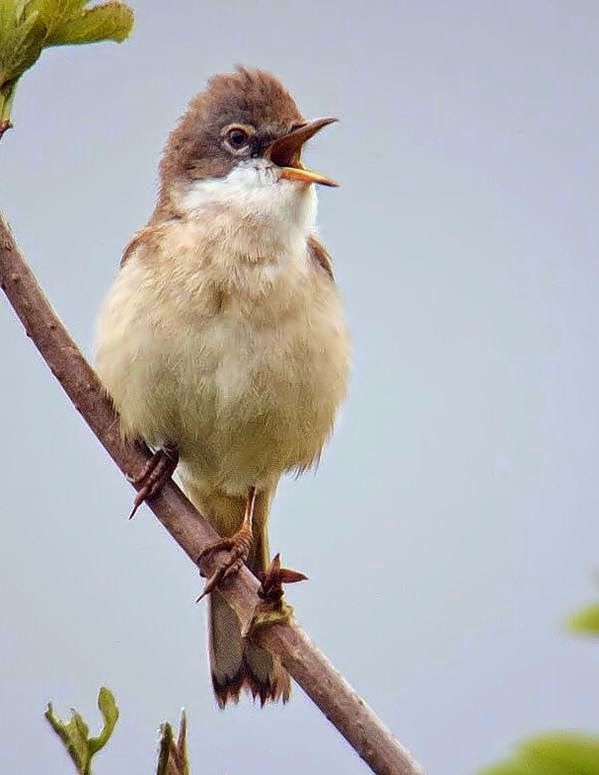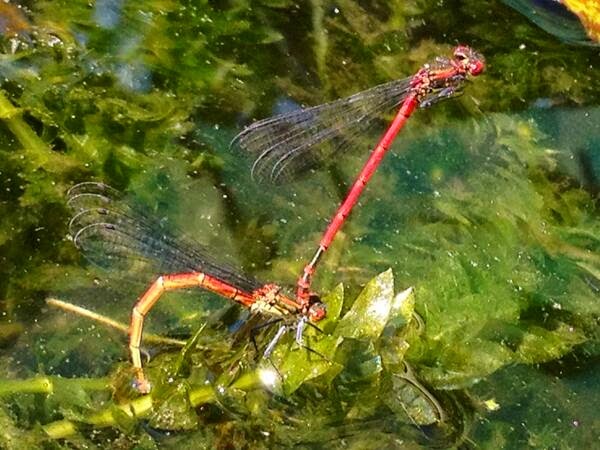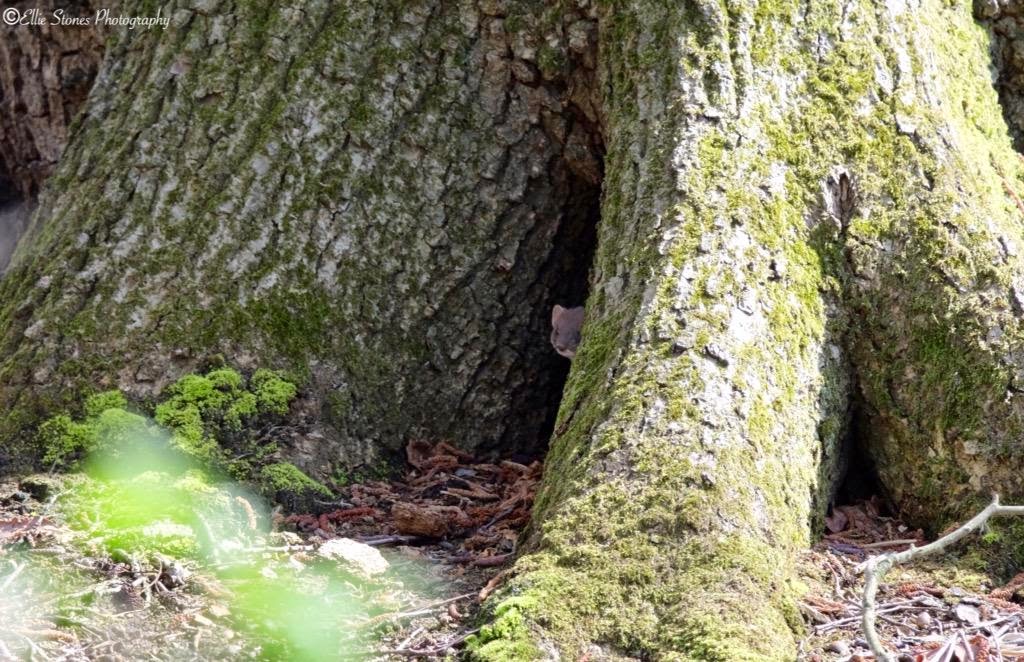Things are getting busy on the reserve with lots of reports on a daily basis of the various wildlife that resides here. It's not just birds that are being spotted, as the weather gets warmer, many insects are beginning to emerge and plenty of butterflies have been spotted this week including Small copper, Speckled wood, Peacock, Small white, Orange-tip, Green-veined white, Brimstone and Common blue.
 |
| Peacock butterfly © Sarah Steggall |
 |
| Green-veined white © Sarah Steggall |
 |
| Speckled wood © Sarah Steggall |
 |
| And a Speckled wood in its more normal pose © Rich Berry |
 |
| Ruby Tiger moth. |
The reserve has been buzzing to the sound of various Hoverflies and bees this week and we have yet to spot our first Dragonfly. The first of which usually emerges in April, the Large Red Damselfly, one to keep your eyes peeled for.
Nick Elsey and Rubyna Sheikh sent us these pictures from their latest visit.
 |
| Alderflies mating |
 |
| Hoverfly Eristalis pertinax on Blackthorn blossom. |
There was even a cute little jumping spider found outside the visitor centre by Visitor Assitant Hawk Honey.
 |
| A cute jumping spider Marpissa mucosa. |
So the invertebrates are out in force at Lackford at the moment and we're pretty sure there's more to come. Thanks to everyone who sent in their photos, very much appreciated.
Owl news!
Our Tawny owl has been visiting its regular perch again and unlike last time where it brought back a rather unappealing (and unimpressed) toad, this time it had something much more palatable (if you're an owl of course) to eat, a mouse. All can be seen here in the video which is can also be seen on our YouTube Channel.
At the end of the video you will also see a clip from our mammal box, which is only a few metres away from where the owl sits. Here you can see the mice play fighting over who gets what feeding area in the box, totally unaware of the horrors going on outside.
Bank Holiday Weekend!
Lots going on at Lackford this Bank Holiday weekend including our new Wild for the Weekend theme, Maybugs! On Saturday and Monday, our insect specialist Hawk, will be out and about on the Kingfisher trail helping you find out more about the insects at Lackford and on Sunday, Visitor Officer Mike will be running pond dipping sessions between 11-12 noon and 2-3pm (£1 per person). Just pop into the centre when you arrive to register your interest.
Sightings
The talk this week is not so much sightings, but the sounds on the reserve. The Nightingale has been quite melodious of late, singing near the centre in the bushes between the education meadow and the ringers hut. Many people have been coming into the centre remarking on the amount of warblers (Cettis, Garden, Willow, Sedge and Reed) they can hear whilst walking around.
 |
| Garden warbler in full song © Barry Woodhouse |
Cuckoo’s have also been heard calling this week from around the sailing lake and down at Ash Carr too. Blackcap’s and Chiffchaff’s have also been in full song around the reserve. Whitethroat’s and Lesser Whitethroat’s have also been spotted around the reserve too.
 |
| Whitethroat singing © Barry Woodhouse |
 |
| Male Blackcap adds his voice to the chorus © Rich Berry |
 |
| Chiffchaff © Rich Berry |
There have been some new arrivals too this week with Common and Arctic Tern’s on the Slough and Sailing lake. Also, we had a brief visit yesterday from a pair of Black-tailed Godwit’s on the Slough. These have brought our species total for 2015 up to 125 birds!
 |
| Common Tern over Sailing lake © Barry Woodhouse |
The Kingisher’s, who have been elusive of late have been found to be nest building on Hawker’s pool in one of the false banks. The pair have been displaying well, sitting outside for up to 20 minutes or more for the last couple of days.
Hobby is being seen more often the last couple of days with several sightings from the Double-decker hide, as well as being spotted over the Sailing lake and the Slough. Curlew was also spotted on Sunday on the Slough.
 |
| Kingfisher at Hawker pool © Sarah Steggall |
 |
| Curlew with some tern’s in the background © David Mackey - Macks Photography |
Other sightings include Goldcrest, Nuthatch, Marsh tit and Treecreeper in Ash Carr. Lots of Swift’s, Swallow’s and House Martin’s all around the reserve. Red Kite spotted at height drifting over the Car Park. Buzzard’s are quite regular towards northern side on the reserve.
Big apologies to Colin. A small technical issue wouldn’t allow me to upload your Nightingale photos to the blog. Will make sure this is sorted by next week. Sorry.
We Need Your Sightings!
Regardless of how unimportant you think your sightings are, we still need them. Only this week, one visitor was amazed to see that we had Egyptian geese as she had never seen one before because she lives in Wales. Yet, to most people living in and around water around East Anglia, Egyptian geese can be quite a common sight and are often not reported. So, regardless of how common you think it may be, we still want to know so that we can let others know. So pop into the centre and let our staff know so we can add your sightings to the board.
Photography competition!
As you can see from the blog and recent posts, there are some excellent photographers amongst you and now’s the time to enter your photos to Suffolk Wildlife Trust’s Photo Competition. All details are available on the website and the competition doesn’t close until November, so plenty of time to get that winning shot! In the meantime, if you’ve got a photo that you took whilst on the reserve that you would like to share, then please send it to us at lackford.centre@suffolkwildlifetrust.org with the words ‘For the blog’ in the subject line. We cannot promise your photo will get in, but we will do our best.
A big thank you!
Once again, a big thank you to all our contributors, whether your photos were published or not. All the photos sent in, help us to show the diversity of wildlife that exists at Lackford and helps make Lackford just that bit more special. Keep them photos coming in, thanks.










































